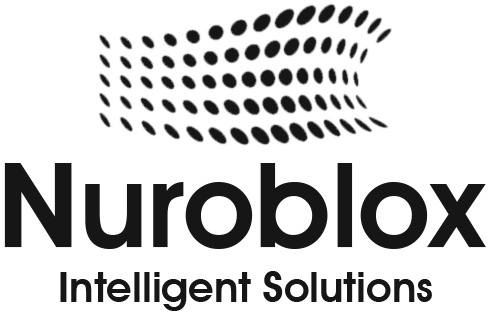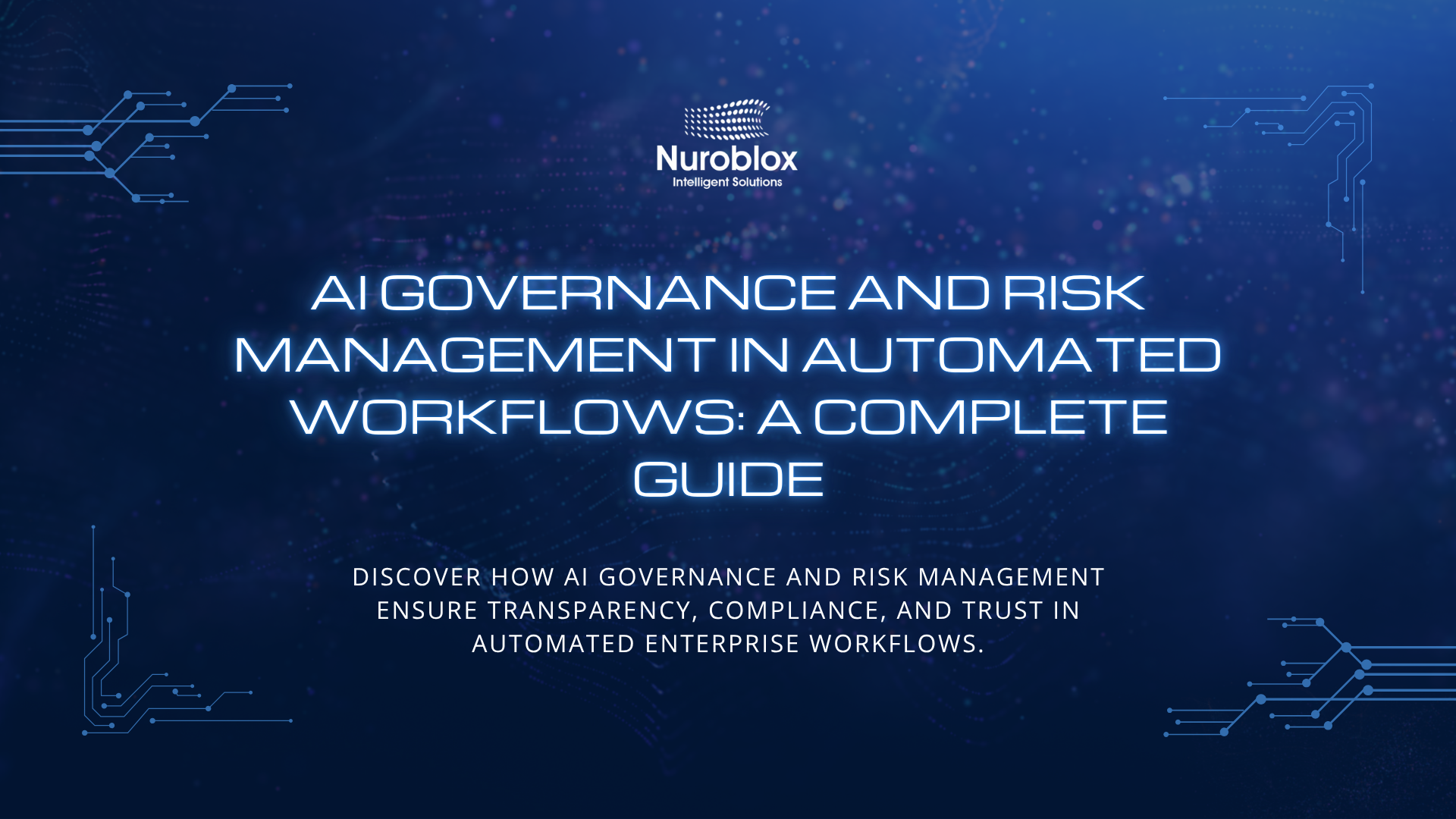AI Governance and Risk Management in Automated Workflows: A Complete Guide
AI governance and risk management have become mission-critical priorities as organizations increasingly rely on automated workflows to drive business operations. With AI systems making autonomous decisions that impact customers, employees, and strategic outcomes, establishing robust governance frameworks isn’t just a compliance checkbox, it’s a competitive necessity that protects your organization from regulatory penalties, reputational damage, and operational failures.
Understanding AI Governance in Automated Workflows
AI governance refers to the structured framework of policies, procedures, and controls that guide how artificial intelligence systems are developed, deployed, and monitored within an organization. In the context of automated workflows, governance ensures that AI-driven processes remain transparent, accountable, and aligned with business objectives and regulatory requirements.
Effective AI governance establishes clear ownership and accountability for AI systems throughout their lifecycle. This includes defining who is responsible for model development, who approves deployment decisions, and who monitors ongoing performance. Without these foundational elements, organizations risk deploying AI systems that operate as black boxes, making decisions that no one fully understands or can justify when things go wrong.
The stakes are particularly high in automated workflows where AI systems handle sensitive data, make financial decisions, or interact directly with customers. A single governance failure can cascade through interconnected processes, amplifying errors and creating compliance violations across multiple business functions simultaneously.
Critical Risk Categories in AI-Powered Automation
Algorithmic bias represents one of the most pervasive risks in AI-driven workflows. When training data reflects historical prejudices or lacks diversity, AI models perpetuate and sometimes amplify discriminatory patterns in hiring, lending, customer service, and other critical business processes. Organizations must implement rigorous bias testing and establish diverse review teams to identify and mitigate these issues before deployment.
Data privacy and security vulnerabilities emerge when automated workflows process personal information without adequate safeguards. AI systems often require access to vast datasets that may include sensitive customer data, proprietary business information, or regulated personal identifiers. Breaches or unauthorized access can result in massive fines under regulations like GDPR, CCPA, and sector-specific compliance frameworks.
Model drift and performance degradation occur when AI systems trained on historical data become less accurate as real-world conditions change. In automated workflows, this can lead to incorrect decisions, failed processes, and customer dissatisfaction. Continuous monitoring and retraining protocols are essential to maintain system reliability over time.
Transparency and explainability challenges create accountability gaps when stakeholders cannot understand how AI systems reach specific decisions. This becomes particularly problematic in regulated industries where organizations must demonstrate compliance and justify automated decisions to auditors, regulators, and affected individuals.
Building a Comprehensive AI Governance Framework
A robust AI governance framework begins with clear policies and standards that define acceptable use cases, prohibited applications, and decision-making authorities for AI deployment. These policies should specify data handling requirements, model validation procedures, and escalation protocols for high-risk decisions.
Governance committees and oversight structures provide the organizational muscle to enforce AI policies. Leading organizations establish AI ethics boards, cross-functional review committees, and dedicated governance roles such as Chief AI Ethics Officer or AI Risk Manager. These bodies evaluate proposed AI projects, approve deployments, and investigate incidents.
Documentation and audit trails create the transparency necessary for accountability and compliance. Organizations should maintain comprehensive records of training data sources, model architectures, validation results, deployment decisions, and ongoing performance metrics. This documentation proves invaluable during regulatory audits, internal reviews, and incident investigations.
Risk assessment and classification systems help prioritize governance efforts by categorizing AI applications based on their potential impact. High-risk systems that make consequential decisions about individuals or handle sensitive data require more stringent controls, validation processes, and human oversight than low-risk automation of routine administrative tasks.
Implementing Effective Risk Management Strategies
Pre-deployment validation and testing represents your first line of defense against AI risks. Organizations should conduct thorough testing that includes adversarial scenarios, edge cases, and stress conditions that models may encounter in production. This validation should assess accuracy, fairness, security vulnerabilities, and alignment with business requirements before any system goes live.
Continuous monitoring and performance tracking ensures that AI systems maintain acceptable performance levels after deployment. Implement real-time dashboards that track key metrics such as prediction accuracy, decision distribution across protected groups, processing times, and error rates. Establish automated alerts that flag anomalies requiring immediate investigation.
Human-in-the-loop mechanisms provide critical safeguards for high-stakes decisions. Design automated workflows with appropriate checkpoints where human experts review AI recommendations before final actions are taken. This is particularly important for decisions involving significant financial impact, legal consequences, or individual rights.
Incident response and remediation protocols prepare organizations to act quickly when AI systems fail or produce harmful outcomes. Develop clear procedures for investigating incidents, notifying affected stakeholders, implementing corrective measures, and preventing recurrence. Regular incident response drills help teams respond effectively under pressure.
Compliance and Regulatory Considerations
The regulatory landscape for AI continues to evolve rapidly across jurisdictions. The European Union’s AI Act establishes risk-based requirements for AI systems, with particularly stringent obligations for high-risk applications in areas like employment, credit decisions, and law enforcement.
In the United States, sector-specific regulations govern AI use in healthcare (HIPAA), financial services (FCRA, ECOA), and employment (EEOC guidelines). Organizations operating across multiple jurisdictions must navigate this complex patchwork of requirements, often implementing the most stringent standards globally to ensure comprehensive compliance.
Data protection regulations such as GDPR and CCPA impose specific requirements on automated decision-making, including rights to explanation, human review, and opt-out mechanisms. Organizations must design AI-powered workflows that respect these individual rights while maintaining operational efficiency.
Industry standards and frameworks provide practical guidance for AI governance implementation. The NIST AI Risk Management Framework, ISO/IEC standards for AI, and industry-specific guidelines offer structured approaches to identifying, assessing, and mitigating AI risks in automated workflows.
Security Measures for AI-Driven Workflows
Access controls and authentication limit who can interact with AI systems, training data, and model parameters. Implement role-based access controls, multi-factor authentication, and principle of least privilege to minimize insider threats and unauthorized modifications.
Data encryption and privacy preservation techniques protect sensitive information throughout the AI lifecycle. Use encryption for data at rest and in transit, implement secure enclaves for model training, and consider privacy-enhancing technologies like differential privacy and federated learning for particularly sensitive applications.
Adversarial attack protection defends against malicious attempts to manipulate AI systems through poisoned training data, adversarial examples, or model extraction attacks. Regular security testing, input validation, and anomaly detection help identify and block these sophisticated threats.
Supply chain security addresses risks from third-party AI models, datasets, and components. Establish vendor assessment processes, verify the provenance of training data, and maintain oversight of external dependencies that could introduce vulnerabilities into your automated workflows.
Organizational Culture and Change Management

Building an effective AI governance program requires more than policies and technology-it demands a culture of responsible AI use throughout the organization. Leadership must clearly communicate the importance of ethical AI practices and model these values in their own decision-making.
Training and awareness programs ensure that everyone involved in AI development, deployment, or oversight understands their responsibilities and the potential risks. Tailor training to different roles, providing technical teams with detailed guidance on bias mitigation and security while giving business stakeholders the knowledge to ask informed questions about AI proposals.
Cross-functional collaboration breaks down silos between data science, IT, legal, compliance, and business teams. Establish regular forums for these groups to share insights, identify emerging risks, and coordinate governance activities. This collaboration ensures that AI systems reflect diverse perspectives and expertise.
Incentive alignment reinforces governance objectives by recognizing and rewarding responsible AI practices. Include AI ethics and governance metrics in performance evaluations, celebrate teams that identify and remediate risks, and ensure that innovation pressures don’t override safety and compliance considerations.
Measuring Governance Effectiveness
Effective AI governance requires concrete metrics to assess performance and drive continuous improvement. Compliance metrics track adherence to policies, completion of required reviews, and remediation of identified issues. Monitor the percentage of AI projects that complete risk assessments, the time to resolve governance violations, and the frequency of policy exceptions.
Risk metrics quantify the organization’s AI risk exposure and the effectiveness of mitigation measures. Track the number of high-risk AI systems in production, incident rates, bias detection results, and the coverage of monitoring systems across your AI portfolio.
Operational metrics measure the efficiency of governance processes without compromising thoroughness. Monitor the time required for governance reviews, the ratio of approved to rejected AI projects, and stakeholder satisfaction with governance support. Balance speed with safety to enable innovation while maintaining appropriate controls.
Outcome metrics assess the real-world impact of AI governance efforts. Measure regulatory compliance rates, the financial impact of AI incidents, customer trust indicators, and the success rate of AI deployments. These metrics demonstrate governance value to leadership and guide resource allocation decisions.
Taking Action on AI Governance and Risk Management
Implementing robust AI governance and risk management in automated workflows protects your organization from regulatory exposure, operational failures, and reputational damage while enabling responsible innovation at scale. Start by assessing your current AI governance maturity, identifying high-risk workflows requiring immediate attention, and establishing the foundational policies and oversight structures that will guide sustainable AI adoption.
The complexity of modern AI systems demands specialized platforms that embed governance and security capabilities throughout the automation lifecycle. Explore how enterprise AI solutions and AI workflow automation can help your organization balance innovation with responsible AI governance and risk management.


